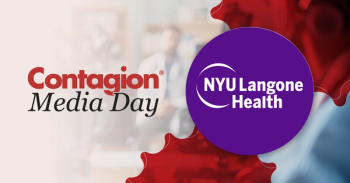
Tuberculosis Outbreak in US Traced to Bone Grafts
CDC links 2021 outbreak of tuberculosis in US affecting 113 persons and causing at least 3 deaths to bone grafts from one infected, deceased donor.
The Centers for Disease Control and Prevention (CDC)
Noah Schwartz, MD, medical epidemiologist, CDC, and colleagues point out that donor-derived tuberculosis after solid organ transplantation has been well characterized, but that transmission of mycobacterium tuberculosis through tissue grafts is rare. Their investigation, however, revealed the largest tissue-derived tuberculosis outbreak ever recorded, affecting 113 persons in 18 states, with at least 3 attributable deaths.
"The outbreak notification and response were swift and effective," Schwartz told Contagion.
"The Delaware Division of Public Health notified CDC on May 25, 2021, of 7 patients who were diagnosed with confirmed or suspected tuberculosis disease in April and May 2021 after undergoing spinal surgery. At the state's invitation, a CDC team deployed to Delaware to describe the epidemiology of cases and opportunities for transmission, and to provide prevention and treatment recommendations," he recounted.
"On June 2, 2021, another state reported a case of TB disease following spinal surgery, and the manufacturer proactively issued a voluntary, nationwide recall of the single lot of product linked to these patients," Schwartz said.
Following the recall, 18 unused units were located and sequestered. Seven of the 113 product recipients died before the outbreak was detected, and 1 died the day after being notified of the exposure. Three of the deaths were attributed to tuberculosis after recognition of the outbreak. All 105 living recipients were notified of their tuberculosis exposure by June 15, 2021. Eight had begun treatment before the outbreak detection, and the remaining 96 were started on treatment by June 21, 2021.
Current regulations in the US do not require organ or tissue donors to be assessed for tuberculosis or tuberculosis risk factors, or for laboratory testing for M tuberculosis. The manufacturer had processed the bone tissue into a product that included demineralized cortical bone and cancellous bone processed to retain live cells; and samples underwent bioburden testing for bacteria and fungi, but not for M tuberculosis.
A change in regulations could follow from the CDC investigation findings, Schwartz suggested. "Based on this investigation,t he American Association of Tissue Banks has developed new recommendations for preventing tissue transmission of TB," he said.
In the case of this infected tissue donor, a deceased 80 year old man, there was a history of previous residence in, and frequent travel to a country with an annual tuberculosis incidence of greater than 20 cases per 100,000 population. His risk factors for progression of tuberculosis included end-stage renal disease and type 2 diabetes. He had skin tested negative for tuberculosis, however, at a dialysis center 4 months before his hospital admission. At admission, he had also completed, and answered "no" to all questions on a tuberculosis risk assessment questionnaire. The standard donor testing for hepatitis B and C, HIV, syphilis, and human T-lymphotropic virus was negative.
In the hospital, chest radiography revealed patch bilateral airspace opacities with a small pleural effusion, which were presumed to reflect community acquired pneumonia. A history of having lost approximately 35kg body weight over 2 years had been attributed to dietary changes; and his cough and dyspnea were attributed to heart and renal failure. There was no mycobacterial testing in the hospital before he expired in hospice care.
Schwartz and colleagues suggest that the negative tuberculin skin test 4 months before the death could have been a false negative from impaired T-lymphocyte function, due to his end-stage renal disease and even the progressed tuberculosis disease. They also note the possibility that the dermal response to the test had been misinterpreted.
The report recommends several measures to avoid the recurrence of these events, and Schwartz emphasized the importance of changing procedures and improving safeguards, in his comments to Contagion. "The most important finding from this study was that standard donor and tissue screening measures did not prevent this outbreak," he said.
"All prospective tissue donors should be assessed for risk factors for TB infection and symptoms of TB disease," Schwartz declared. "Laboratory testing of donated tissues, particularly involving products containing live cells, should be strongly considered if TB risk factors or symptoms are present."
Newsletter
Stay ahead of emerging infectious disease threats with expert insights and breaking research. Subscribe now to get updates delivered straight to your inbox.
























































































































































































































































































